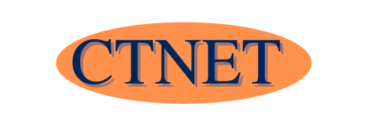In this blog post, I will put forward my argument on why I only consider the support of backlinks as essential in any application note-taking application hosting a Personal Knowledge Management system. Let’s start by defining what a backlink is.
What is a backlink?
A backlink is a bidirectional link which allows you to navigate in both directions. Most applications that support backlinks also list the source document within a reference list. Some applications take this further by using these links to create mind maps of your knowledge.

The important thing is that a backlink allows you to link related concepts, ideas and thoughts, creating a path through your notes which can help you form new ideas.
Let’s start by looking at the history of links both in personal knowledge management systems and in technology.
History of links in Personal Knowledge Management System
Personal Knowledge management systems existed on paper before they were created on computers, such as the Zettelkasten (Slip box) used by Niklas Luhmann, who stored his notes on slip cards and linked them to other related notes in his Zettelkasten. During 30 years, he published 58 books and hundreds of articles.
The strength of his system was that he could link related ideas and concepts together even if the underlying fields of study were unrelated. This gave Niklas fresh insights and ideas in his study. You can learn more about how Niklas Luhmann used the Zettelkasten method in Sonke Ahrens’s How to take smart notes. I have linked to my summary and review of the book. I want to work towards that with my personal Zettelkasten system. Although my Zettelkasten may be in digital form, the underlying principle is the same. You can learn more about the Zettelkasten method in our introductory guide to the Zetelkasten method.
History of links in computing
Links started being used in computing during the early 1990s with the birth of the World Wide Web. It is the ability of the web to link related information across the entire web. Linking related information across multiple platforms and publishers is one of the main reasons we live in an information golden age.
Take this very blog post, which is linked to information I think is related to what I’m writing about in both this blog post, and other articles I have written on this site contain links to external web pages. In ways, they indicate paths through what I was thinking when I was writing or editing that post. This will be true of anything you read online.
Why backlinks should be used in a Personal Knowledge Management System
In a Personal knowledge management system, you want to keep the structure to a minimum. The core of my Zettelkasten has two folders: one to keep my literature notes, and the second folder contains my permanent notes. The main provider of structure in my system is backlinks.
The backlinks provide the structure by linking to other related notes, giving me a path to explore my notes at some point in the future.
Whenever I look to create a permanent note, I have to consider if there are any existing notes that I should look to create. At times, I create a link to a note I haven’t even created. On occasions, the act of creating links between notes has given me some fresh insights.
When I’m reading, I sometimes add a note if I think it’s relevant or related to some idea I have already read so that I’m aware of this relation later in the note-taking policy.
After all, we learn by linking new ideas to existing ideas. The web of links acts as a path through your knowledge and understanding. Who knows where that will take you?
Conclusion
After reading this article, I hope that I have convinced you of the importance of backlinks in a note-taking application, as it will enable you to create a Personal Knowledge Management system.
You can also find all our content on Personal Knowledge Management systems here.
Last updated on 05/05/2024
